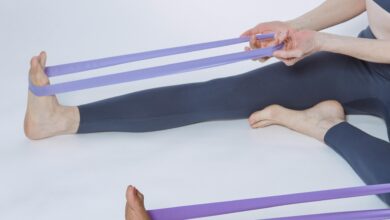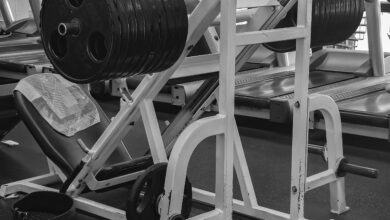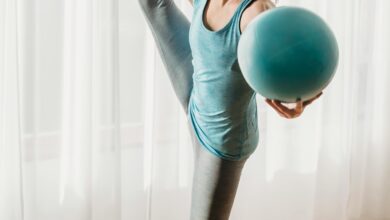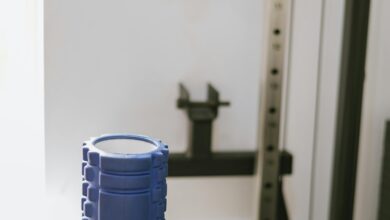The Best Fitness Equipment for Seniors: Staying Active and Healthy

Staying physically active is essential at any age, but it becomes even more critical as we grow older. Regular exercise helps seniors maintain mobility, improve balance, boost cardiovascular health, and enhance overall well-being. However, choosing the right fitness equipment can be challenging, especially when considering safety, ease of use, and specific needs like joint support or low-impact workouts. In this article, we’ll explore the best fitness equipment for seniors, highlighting options that cater to different fitness levels and goals.
Why Is Fitness Important for Seniors?
Before diving into equipment recommendations, let’s briefly discuss why staying fit is so important for older adults:
- Improved Mobility: Exercise strengthens muscles and joints, making daily activities easier.
- Better Balance: Reduces the risk of falls, which are a leading cause of injury among seniors.
- Cardiovascular Health: Lowers blood pressure, improves circulation, and reduces heart disease risks.
- Mental Well-Being: Physical activity releases endorphins, combating depression and anxiety.
- Bone Density: Weight-bearing exercises help prevent osteoporosis and fractures.
With these benefits in mind, let’s look at the top fitness equipment tailored for seniors.
1. Resistance Bands
Why They’re Great
Resistance bands are lightweight, portable, and versatile tools perfect for strength training without putting excessive strain on joints. They come in various resistance levels, allowing users to progress gradually.
Best Uses
- Strengthening arms, legs, and core muscles.
- Improving flexibility and range of motion.
- Performing seated exercises for those with limited mobility.
Tips for Use
- Choose bands with comfortable handles if gripping is an issue.
- Start with light resistance and increase intensity over time.
- Follow instructional videos or consult a trainer for proper form.
2. Recumbent Exercise Bike
Why It’s Great
A recumbent bike provides a low-impact cardiovascular workout while supporting the back and reducing stress on knees and hips. Its reclined seating position makes it ideal for seniors with balance issues or joint pain.
Best Uses
- Building endurance and improving heart health.
- Enhancing leg strength and circulation.
- Offering a safe alternative to walking or running.
Tips for Use
- Adjust the seat and handlebars for optimal comfort.
- Begin with short sessions (10–15 minutes) and gradually increase duration.
- Monitor heart rate to stay within a safe zone.
3. Stability Ball (Swiss Ball)
Why It’s Great
Stability balls are excellent for improving balance, core strength, and posture. They also encourage gentle stretching and muscle engagement.
Best Uses
- Core strengthening exercises like seated twists or planks.
- Balance training by sitting on the ball during routine tasks.
- Light stretching to relieve tension and improve flexibility.
Tips for Use
- Select a ball size appropriate for your height.
- Use near a wall or sturdy surface for added stability.
- Avoid bouncing excessively to prevent injury.
4. Hand Weights or Dumbbells
Why They’re Great
Light hand weights or dumbbells are simple yet effective tools for building upper body strength and maintaining bone density. They’re easy to store and affordable.
Best Uses
- Arm curls, shoulder presses, and lateral raises.
- Combining with resistance band exercises for added intensity.
- Incorporating into chair-based routines for convenience.
Tips for Use
- Start with 1–3 pounds and increase weight slowly.
- Focus on controlled movements to avoid strain.
- Pair with a mirror to ensure correct posture.
5. Treadmill with Safety Features
Why It’s Great
Walking is one of the most accessible forms of exercise for seniors, and treadmills allow for indoor walking regardless of weather conditions. Modern models often include safety features like emergency stop buttons and side rails.
Best Uses
- Maintaining cardiovascular fitness.
- Practicing gait stability in a controlled environment.
- Tracking distance, speed, and calories burned.
Tips for Use
- Opt for a model with a wide belt and low starting speed.
- Wear supportive shoes and hold onto the handrails if needed.
- Limit incline settings to reduce joint stress.
6. Elliptical Machine
Why It’s Great
Ellipticals provide a full-body, low-impact workout that mimics natural movements like walking or climbing stairs. They’re gentler on the joints compared to treadmills while still offering excellent cardio benefits.
Best Uses
- Engaging both upper and lower body muscles.
- Burning calories efficiently without high impact.
- Customizing workouts with adjustable resistance and stride lengths.
Tips for Use
- Test different resistance levels to find what feels comfortable.
- Keep hands lightly resting on the handles rather than leaning heavily.
- Stay hydrated during longer sessions.
7. Pedal Exerciser
Why It’s Great
Pedal exercisers are compact, portable devices that simulate cycling movements. They can be used on the floor for leg exercises or placed on a table for arm workouts.
Best Uses
- Increasing circulation in legs or arms.
- Providing a convenient way to exercise while watching TV or reading.
- Suitable for small spaces or travel.
Tips for Use
- Position the device securely before use.
- Start with slow pedaling and increase pace as tolerated.
- Combine with breathing exercises for relaxation.
8. Yoga Mat and Accessories
Why It’s Great
Yoga promotes flexibility, balance, and mental clarity—all vital for senior wellness. A good-quality yoga mat paired with props like blocks or straps ensures comfort and accessibility.
Best Uses
- Gentle stretches to alleviate stiffness.
- Poses that enhance balance and coordination.
- Mindfulness practices to reduce stress.
Tips for Use
- Look for non-slip mats with extra cushioning.
- Modify poses using props to accommodate physical limitations.
- Join beginner-friendly classes designed for seniors.
9. Rowing Machine
Why It’s Great
Rowing machines offer a full-body workout that combines cardio and strength training. Many modern designs feature smooth motions and adjustable resistance, making them suitable for seniors.
Best Uses
- Strengthening arms, legs, and back muscles.
- Boosting cardiovascular endurance.
- Encouraging proper posture and alignment.
Tips for Use
- Choose a machine with ergonomic handles and padded seats.
- Learn proper technique to avoid straining the lower back.
- Start with shorter sessions and build up gradually.
10. Step Counter or Fitness Tracker
Why It’s Great
Fitness trackers and step counters motivate seniors to stay active by setting daily goals and tracking progress. Many devices also monitor heart rate, sleep patterns, and other health metrics.
Best Uses
- Setting achievable step goals (e.g., 5,000 steps per day).
- Monitoring activity levels throughout the week.
- Staying accountable with reminders and notifications.
Tips for Use
- Pick a user-friendly device with large fonts and simple controls.
- Sync the tracker with a smartphone app for detailed insights.
- Celebrate milestones to maintain motivation.
Safety Tips When Using Fitness Equipment
Regardless of the equipment chosen, safety should always come first. Here are some general guidelines:
- Consult Your Doctor: Before starting any new exercise program, get clearance from your healthcare provider.
- Warm Up and Cool Down: Prepare your body with light stretches and cool down afterward to prevent soreness.
- Prioritize Comfort: Wear loose, breathable clothing and supportive footwear.
- Stay Hydrated: Drink water before, during, and after workouts.
- Listen to Your Body: Stop immediately if you experience pain, dizziness, or discomfort.



